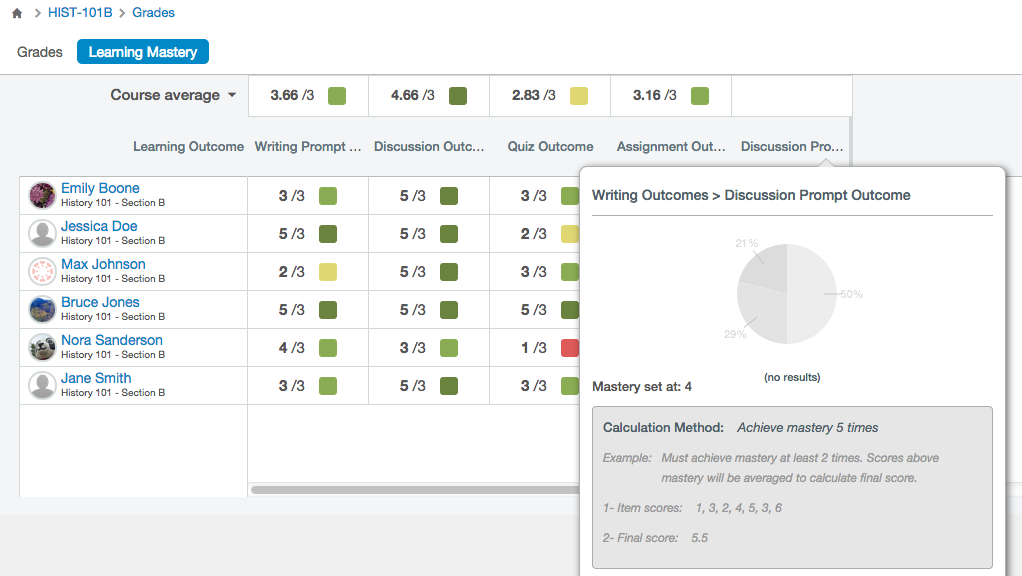
Learning outcomes can be related to Canvas assignments, discussions, or assessments to track competency development, proficiency, and mastery.
A substantial component of many lab, studio, design and performance courses are activities that engage students to work together. These may take the form of team projects, peer critique, or ensemble performance. While a team approach is not the exclusive domain of P/S/L courses, this approach is often central to attaining their learning objectives. In either scenario, we should support and preserve these activities as much as possible. Their value is essential to:
- Develop collaboration and teamwork skills, including delegation and distributing tasks, coordinating effort, integrating multiple contributions, synthesis of a common view, and communicating across differences
- Guide students to give and receive feedback and sharpen their evaluation skills
- Build technical and artistic skills necessary for ensemble performance
- Explore core performing arts repertoire that is ensemble-based
- Promote engagement
- Fulfill accreditation standards
- Mimic working environments students will enter after graduation
- Enable students to complete more substantial projects than individual efforts would allow
- Cultivate a manageable number of projects to allow assessment
Delivering team-based and peer learning opportunities require instructors to plan a number of stages: a) assigning groups and group topics; b) monitoring and guiding student work; c) student creation of a final product (presentation, poster, work or performance); d) delivery and assessment of the product.
Primarily technological methods are described below which help instructors with the operational and logistical aspects of this work. Instructors will likely need additional training and guidance in effective pedagogies. In our survey of faculty, a number noted that the success they observed in remote team learning benefitted from the trust and bonds students established during the in-person portion of the semester. Without that in-person opportunity, faculty may need to find new and additional strategies to promote fruitful student collaboration for those students who are not physically present.
- Computer
- Internet Connection
- Time to map learning activites to specific learning outcomes
